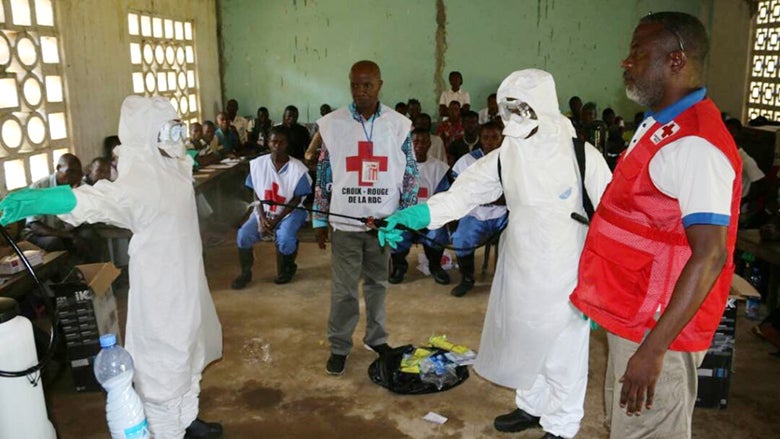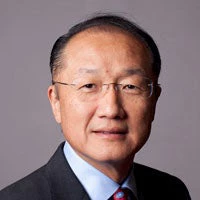
The 9th Ebola outbreak in the Democratic Republic of Congo (DRC) has officially ended today —77 days and 28 deaths after an outbreak was declared on May 8. For the families of those 28 Ebola victims, the declaration comes too late—a loved one was lost to a disease that should be both preventable and treatable. That is always a needless tragedy.
Today is also a day to acknowledge that we have taken a momentous step forward in breaking the cycle of panic and neglect when it comes to outbreaks. Only two-and-a-half months ago, another pandemic seemed probable: an Ebola outbreak in three remote provinces, which spread quickly to the urban center of Mbandaka on the busy Congo River, appeared likely to spread rapidly around the country or even the region.
But thanks to the determination and effort of the Congolese people and the government of the DRC, they faced down Ebola against challenging odds. And it’s clear that the global community has learned some of the lessons of the 2014 West Africa Ebola outbreak.
The DRC government quickly put out a nearly $57 million, three-month plan for a joint Ebola response with international partners such as the World Health Organization and UNICEF. The response effort was fully financed within two days, with several donors stepping up after the government put in the first $4 million. The World Bank already had major health system investments in the DRC, including $15 million committed to disease surveillance, which was made immediately available to respond to the outbreak. And for the first time, we activated the cash window of our newly-operational Pandemic Emergency Financing Facility, which immediately provided a $12 million grant to support frontline response efforts.
Timely financing meant that a robust Ebola response could be rolled out systematically, within the span of only a few weeks. Teams rapidly conducted epidemic surveillance and contact tracing—tracking both patients and those who have been in contact with them for observation and treatment. Screening at airports, markets, and border crossings helped contain the spread of the disease. And the first-ever proactive major vaccination campaign during an outbreak reached over 3,000 people in the DRC, using an Ebola vaccine that was effective in a clinical trial in Guinea in 2015, but which came too late to help during that outbreak. The DRC government also led an innovative public health information campaign that pulled in church and community leaders, who used the radio to teach hygiene and prevention and limit the spread of the disease.
One of the major lessons from the 2014 West Africa Ebola outbreak is that funding is one of the largest factors for how deadly an outbreak turns out to be. Financing for pandemic response needs to be quick and robust, so the government and international responders can focus on combatting the outbreak and saving lives—not fundraising. During months of pass-the-hat fundraising in 2014, money slowly trickled in while the death toll climbed. By the end, more than 11,000 people were dead, and the economies of Liberia, Guinea, and Sierra Leone suffered billions of dollars in long-term damage. Upfront surge financing is critical to ensure a rapid response.

In the years leading up to 2014, there was also inadequate funding for pandemic preparedness, which requires long-term investments in disease surveillance and stronger health systems at the country level. With a strong national system, health services can reach people quickly, even in the remotest areas, and outbreaks can be caught early. If the earliest Ebola cases in the villages of Guinea had been properly diagnosed and treated in 2013, the outbreak would not have turned into a pandemic.
After the 2014 Ebola experience, the World Bank said, ‘never again’. And in the three years since, we have been making good on that commitment to help build pandemic preparedness and response systems. We are investing in pandemic preparedness in 25 low-income countries, in health security in the East Asia and Pacific region, and in integrated regional disease surveillance programs across several countries in East-and-West Africa.
On pandemic response, we worked with donors such as Japan, Germany, and Australia – as well the global insurance industry – to create the Pandemic Emergency Financing Facility (PEF), which became operational in June 2017. The Facility is tailor-made to respond quickly to outbreaks through an innovative combination of cash grants and up to $425 million in pandemic insurance coverage for larger, multi-country outbreaks. Today, for the first time, the 77 poorest countries in the world are insured against pandemic threats.
All of these investments, as well as larger global changes such as the new WHO Health Emergencies Programme, made a difference this time, but we cannot let our guard down. Disease outbreaks will always happen; a pandemic is a choice. Outbreaks turn into pandemics if we are not prepared to mount a timely, robust response. We cannot waste any time building on the lessons from the DRC so we can be even better prepared for the next major outbreak—whenever and wherever it may strike.
This post was originally published on LinkedIn.


Join the Conversation